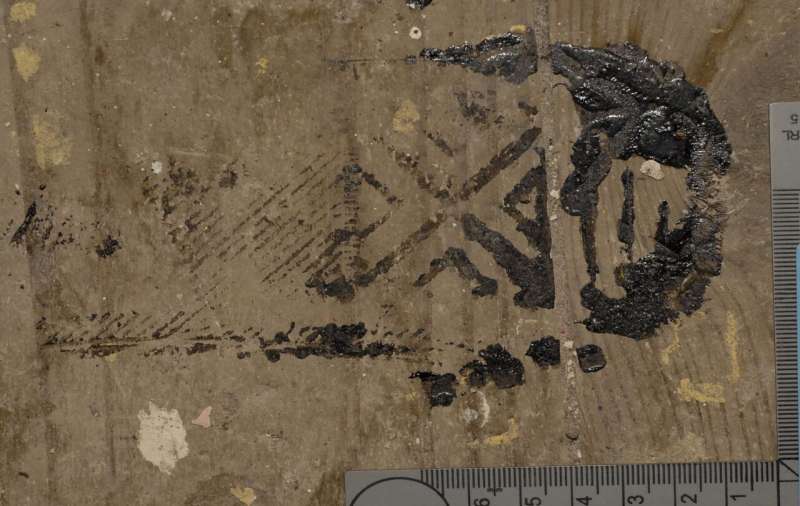This article has been reviewed according to Science X's editorial process and policies. Editors have highlighted the following attributes while ensuring the content's credibility:
fact-checked
proofread
New steps taken to identify criminals' footwear

Forensic experts have developed a new approach to assist the comparison and interpretation of footwear mark evidence.
The joint project saw Staffordshire University collaborate with Huddersfield University and Yorkshire and the Humber Regional Scientific Support Services (YatH RSSS), which supports four police forces in the region.
Together, they created a specially designed 'assault course' to collect data which can be used to verify footwear mark evidence left by criminals. The study focussed on footwear most frequently worn by detainees in custody and the most commonly identified tread patterns found at crime scenes, according to the National Footwear Database.
"To maintain and improve reliability of results, we wanted to develop a standardized approach for 'ground truth data' collection so that multiple units can create and use one large dataset to support the comparison of footwear mark evidence." Selina Reidy, an Identification Expert with YatH RSSS, explained.
It is important that a ground truth database mimics the real world as far as possible, including challenges seen in casework. In footwear mark evidence, this includes partial marks, type of substance the mark has been made in, and distortions that affect the quality of marks.
Staff members at YatH RSSS were enlisted to help with data collection. Participants with a range of shoe-sizes repeatedly walked the same route each day to show the progression of wear from brand new to worn-out trainers and they created mock crime scene marks at specific intervals as the treads wore down.
The 'course' captured footwear marks deposited on different surfaces including wood effect laminate flooring, a wheelie bin, paper and a uPVC windowsill. Different substances were also used to replicate footmarks deposited in dirt, dust and mud.
Claire Gwinnett, Professor of Forensic and Environmental Science at Staffordshire University, said, "The big challenge is, how do you make representative, realistic footwear impressions for ground truth data in a way that is cost effective? Criminals might walk, run, spin around, or kick in a door which all create different types of marks. To recreate this, we designed what is essentially an assault course for forensic footwear where participants complete a series of different movements."
"To aid the creation of marks showing movement, participants were required to turn on the spot to create twisting marks which are often observed on windowsills. They also had to kick a surface to replicate footwear marks seen at the point of entry, particularly if a door has been kicked to gain access."
The footwear marks were recorded, analyzed and catalogued to create a ground truth database that YatH RSSS now use to carry out research and support evidential comparisons.
Following the pilot's success, a paper detailing the project has been published and its authors hope this will serve as a 'toolkit' for other police forces.
Selina added, "This study provides a blueprint for a national approach to ground truth data collection for footwear mark evidence. The method is not prescriptive but may be used as a guide and can be adapted to meet the requirements of a forensic unit's jurisdiction or to address gaps in an existing dataset."
"It is the first method to be developed and published to encourage national collaboration, and we hope that forensic units across the UK will benefit from this 'off the shelf' product when undertaking comparisons of footwear mark evidence."
The study is published in the journal Science & Justice.
More information: Selina Reidy et al, Planning and developing a method for collecting ground truth data relating to footwear mark evidence, Science & Justice (2022). DOI: 10.1016/j.scijus.2022.09.006
Provided by Staffordshire University




















